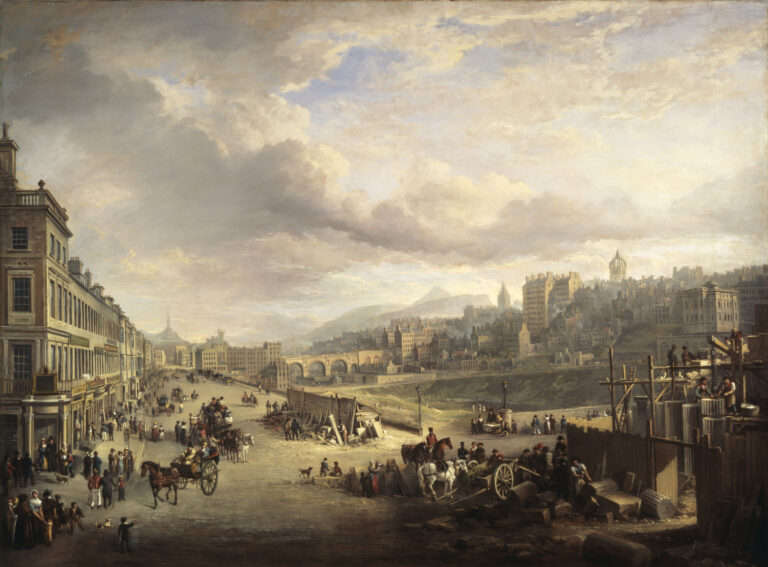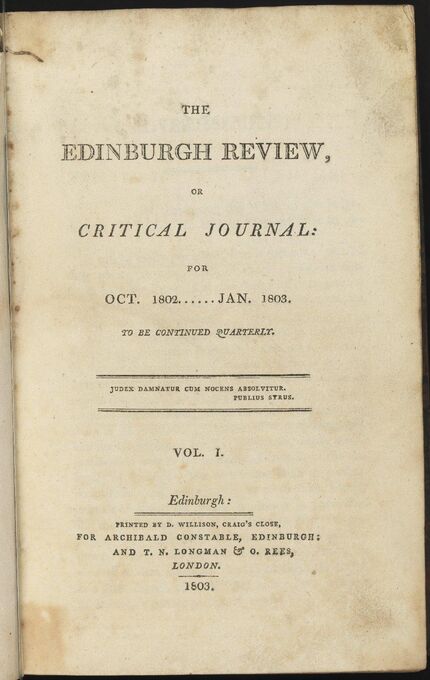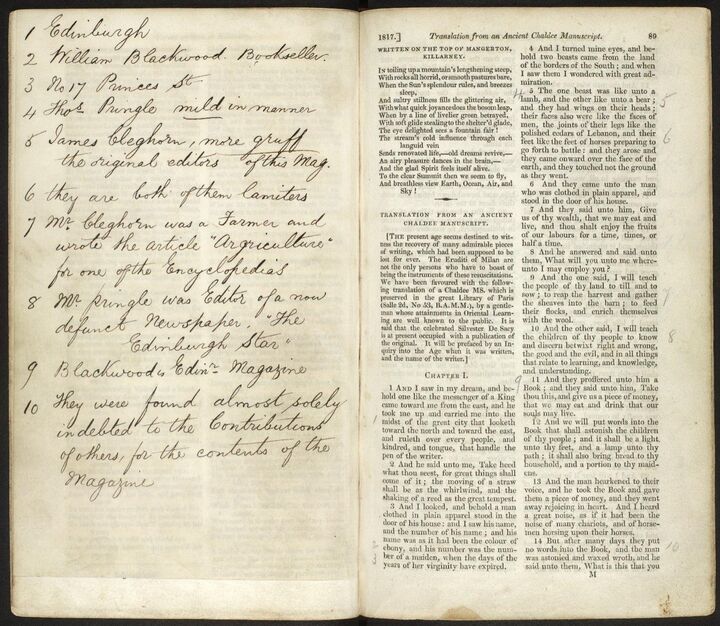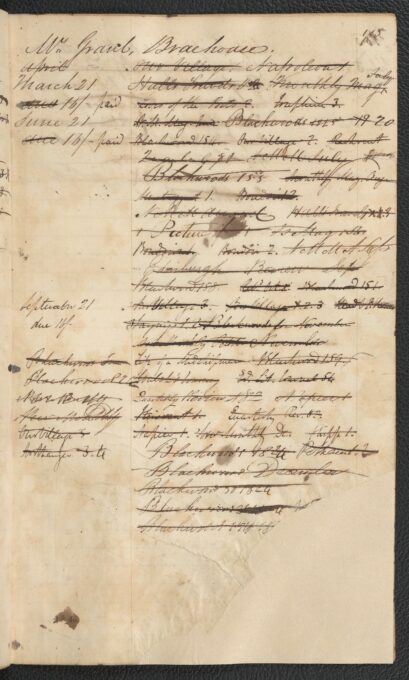Edinburgh’s Reading Lives
Periodicals

Periodical publications were among the most-borrowed works from Scottish libraries from 1750 to 1830. These literary reviews, scientific journals, and popular magazines informed and critiqued enlightened theories and romantic tastes. They often printed extended excerpts from novels and poems and included illustrations.
Image: Panorama of Princes Street, 1825, by Alexander Nasmyth
© National Galleries Scotland Creative Commons CC by NC

Several periodical publications were titled the ‘Edinburgh Review’. The first was launched by members of the Select Society, including William Robertson, in 1755 and promoted ideas of improvement. It ran until 1756. The Edinburgh Magazine and Review followed with similar aims, running from 1773 to 1776. The more successful Edinburgh Review (1802-1929) offered punchy reviews of works it considered important, and was known for slashing literary criticism, famously attacking the Lake Poets and Lord Byron. It promoted reforms advocated by Whig politicians, including the abolition of slavery and parliamentary reform. Walter Scott was a regular contributor.
|

Founded in 1817 as a rival to The Edinburgh Review, Blackwood’s Edinburgh Magazine offered critical essays and reviews. Some of these led to court proceedings when public figures objected to attacks. This annotated page decodes a ‘Translation from an Ancient Chaldee Manuscript', which is really about the early publication of ‘Maga’ as it came to be known. Blackwood’s was influential and no writer was safe from its blistering satires.
|

Anne Grant of Laggan’s ‘New Books’ subscription from Chambers’ Circulating Library included access to periodicals. Her borrowings for 1829 include recently-published issues of The Monthly Magazine and British Register, The New Monthly Magazine and Literary Journal, Blackwood’s Edinburgh Magazine, the Edinburgh Literary Journal, and the Quarterly and Edinburgh Reviews. Grant borrowed these alongside novels popular with Chambers’ subscribers and they may have informed her selections of fiction. Her letters are peppered with references to her periodical reading, and she often recommends particular issues to her correspondents.
|

Periodicals were enhanced by the inclusion of illustrations. Scenes from stories, depictions of landscapes, technical drawings, and portraits added information as well as visual appeal.
This pensive portrait of Walter Scott was published in the November 1818 issue of the New Monthly Magazine to accompany a ‘Memoir of Walter Scott, Esq.’ which includes the speculation that the accomplished translator, editor, and poet ‘is the author of a series of romances, the popularity of which is without a parallel’.
|
